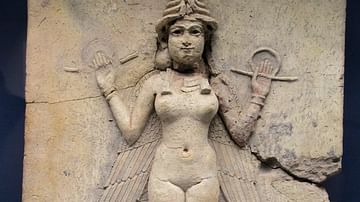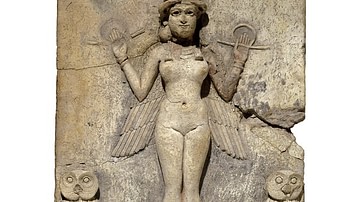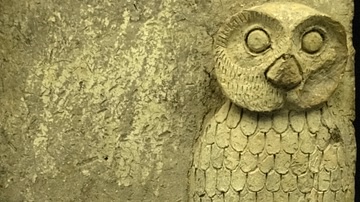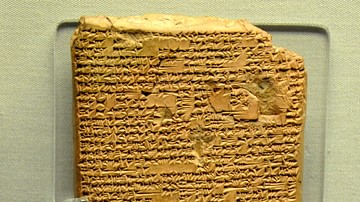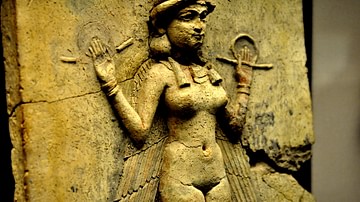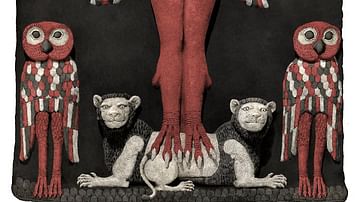Illustration
The figure could be an aspect of the goddess Ishtar, the Mesopotamian goddess of sexual love and war, or Ishtar's sister and rival, the goddess Ereshkigal who ruled over the Underworld, or the demoness Lilitu, known in the Bible as Lilith. The plaque probably stood in a shrine.
Old Babylonian era, 1800-1750 BCE, from southern Iraq (place of excavation is unknown), Mesopotamia, Iraq.
The British Museum, London.
Cite This Work
APA Style
Amin, O. S. M. (2014, March 31). Queen of the Night or Burney's Relief, Mesopotamia. World History Encyclopedia. Retrieved from https://www.worldhistory.org/image/2460/queen-of-the-night-or-burneys-relief-mesopotamia/
Chicago Style
Amin, Osama Shukir Muhammed. "Queen of the Night or Burney's Relief, Mesopotamia." World History Encyclopedia. Last modified March 31, 2014. https://www.worldhistory.org/image/2460/queen-of-the-night-or-burneys-relief-mesopotamia/.
MLA Style
Amin, Osama Shukir Muhammed. "Queen of the Night or Burney's Relief, Mesopotamia." World History Encyclopedia. World History Encyclopedia, 31 Mar 2014. Web. 18 Apr 2024.


